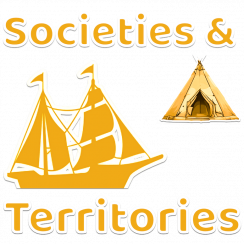Bartering
Indigenous Peoples bartered with the French, that is to say, to exchange their furs for European products. This allowed Indigenous Peoples to obtain goods that did not exist on their territory. Sometimes, they adopted European products because they were made of stronger, more resistant materials.
From clothing to food
Fur was traded for all sorts of products. More than half of all traded goods were European fabrics. They were especially sought after because they were more practical than leather. Unlike leather, for example, wool keeps you warm even when it’s wet.
Metal objects were also popular. Indigenous Peoples often traded for axes, knives and copper pots. These items made preparing meals easier. They also bartered for different kinds of European food such as biscuits, pancakes, grapes, prunes, sugar, flour and spices.
Indigenous Peoples adopted the musket (a kind of long gun) as a hunting tool. Muskets allowed them to reach targets from a greater distance and often killed prey with a single shot. With a bow and arrow, hunters had to shoot at a closer range and then run after wounded animals that tried to get away. Muskets were also used in wars against other Nations in order to maintain a monopoly on the fur trade with the Europeans.
Author: Service national du Récit de l’univers social. Adaptations by LEARN.

